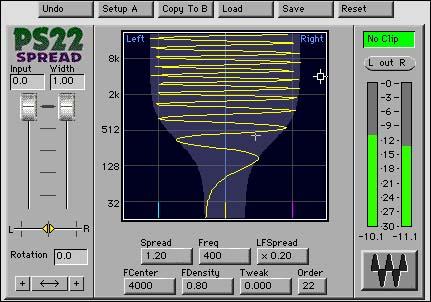Knoxville, TN. Waves Ltd. is shipping a new addition to its family of DSP modules for the Digidesign TDM™ plug-ins, ProTools™ and Sound Designer II™ environments. The PS22 StereoMaker creates a rich stereo image from mono sources, and also enhances the spread of stereo sources.
According to Chad Bloch, Waves Technical Sales Manager for the West Coast, PS22 can be used to create greater space in a stereo mix, as well as to create stereo enhancement of mono recordings or single tracks in a mix.
“The primary purpose is to process a mono recording,” says Bloch. “But you get some really interesting results when you put a stereo mix through it. Individual instruments stay where they belong in the mix, but they sound more spacious, maybe more natural.”
PS22 is designed to avoid problems common with previous stereoization processes. Waves claims that it has virtually no unpleasant “phasiness,” very little coloration, high tonal accuracy, and good mono compatibility.

The Waves PS22 interface provides controls allowing adjustment of specific sounds to be anywhere in the stereo image. It also presents a graphical display of position as a function of frequency.
The PS22 module for the Digidesign DAE plug-in environment is available now at a list price of $1,169 (US). It is also available until November 30 at a special price of $919 (US) to owners of the Waves S1 plug-in for stereo-image manipulation. Future versions of PS22 will support Adobe’s Premiere, and Macromedia’s Deck II and SoundEdit 16.